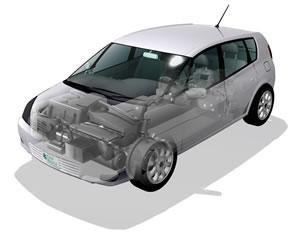
Modern automotive manufacturers are in pursuit of a more perfect internal combustion engine, designed to meet both consumer and regulatory demands for clean, efficient operation. In a recent online article, Digital Manufacturing Report journalist John Kirkley sheds light on two ORNL–industry collaborations benefiting from the lab’s scientific and high-performance computing capabilities to advance engine design.
Both projects are funded through the DOE Vehicle Technologies Program Advanced Combustion Engine subprogram. The first uses high-resolution computational fluid dynamics modeling based on large eddy simulation to examine stochastic (random) and deterministic processes that drive cycle-to-cycle instabilities. It will shed light on the effects of higher exhaust gas recirculation rates on combustion and enable the design of engine systems that use combustion at high EGR rates to improve fuel efficiency and reduce emissions.
The second project seeks to improve the understanding and the design of gasoline fuel injector hole patterns for engine efficiency and lower emissions. Understanding spray formation and the complex fuel–air mixing in the combustion chamber is critical to building higher-efficiency engines. HPC offers a pathway to accurate, faster design modifications.
According to Robert Wagner of ORNL’s Energy and Transportation Science Division, who contributed to the article, ORNL’s HPC capabilities are “absolutely essential to making the breakthroughs necessary for accelerating advanced engine design and the ability of the automotive manufacturers to meet and surpass tomorrow’s stringent emission regulations.”
Already well positioned to address industry needs, ORNL enhanced its capabilities exponentially just days after the article was posted with the launch of Titan, the world’s most powerful supercomputer for open science with a theoretical peak performance exceeding 20 petaflops (quadrillion calculations per second).
Reference: “A New Era in Automotive Engine Development Driven by HPC.” Oct. 25, 2012. Digital Manufacturing Report.

